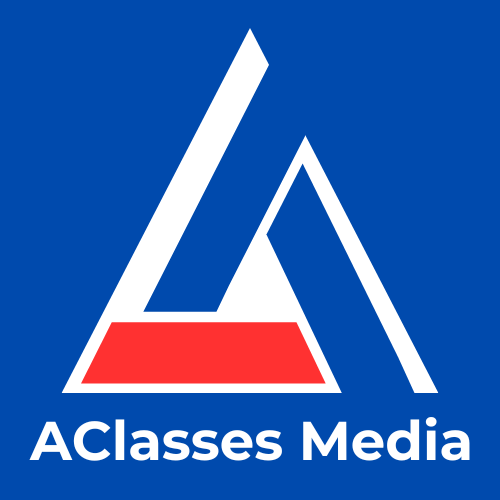Content Optimization Basics: The Beginner’s Guide For 2023

Learn about content optimization basics – the beginner’s guide for 2023. There is a lot of talk about content optimization and how it is going to be the next big thing. This guide will include some of the most important aspects that you need to consider when optimizing your content for search engines, social media, and other channels.
Want to learn about Content Creation Strategy? Then, join AClasses Content Academy.
Related articles on the content optimization series
- Content Optimization Basics: The Beginner’s Guide
- The Importance Of Content Optimization For Beginners
- How To Optimize Content For Your Audience
What is content optimization and why should you care?
Let’s start with SEO. SEO is a marketing tactic that is used to generate quality visitors from search engines. It includes all of the activities in which you focus on your business and drive traffic from those who are very important.
Content optimization is the process of optimizing the content of a website so that it can be found more easily by search engines and users. It also involves creating content that will be interesting to users.
According to a Google article, “Search engine optimization (SEO) is often about making small modifications to parts of your website.”
Going further, the article added that, “when viewed individually, these changes might seem like incremental improvements, but when combined with other optimizations, they could have a noticeable impact on your site’s user experience and performance in organic search results.”
You can read more about the article to learn more – Search Engine Optimization (SEO) Starter Guide
Today, most people are not just looking for information on a website but they are also looking for entertainment. They want to read articles on blogs, watch videos on YouTube and listen to podcasts.
Content optimization can help you meet these needs while providing your company with an edge over other websites in the market.
Content marketing is one of the most effective ways to generate leads and increase revenue for your business. It helps you create valuable content that your target audience will find relevant and engaging.
But to have a successful content marketing strategy, you need to have a strong plan in place first before implementing it into your own business.
Understanding the basic components of a content optimization
Content optimization is a process that includes careful planning, writing, and publishing of content. The process of content optimization is as follows:
- Planning: It starts with strategic planning. This includes setting goals and identifying the target audience.
- Writing: The next step is about writing the article. It can be done in different ways like brainstorming, outlining, or writing an article from scratch.
- Publishing: After this, the article should be published on an appropriate platform for maximum exposure and reach out to the target audience.
That is a simplified way to understand the basic components of content optimization. In reality, content optimization is a broad term that refers to the process of optimizing your content for maximum exposure.
To have success in your content creation and optimization, you need to have a clear understanding of the following:
- What is my target audience?
- What are their interests?
- What are they looking for in content that is relevant to them,
- And where should I be posting the content?
Remember that the goal of the content optimization process is to improve the ranking of a website on search engines such as Google. And this requires a good understanding of the basic components of content optimization, including keyword research and link building.
Talking about keyword research, let’s go ahead and explore Keyword Density and Phrase Matching for better optimization of your content.
Keyword Density and Phrase Matching
Keyword density and phrase matching are two important factors that can help in improving the search engine ranking of a website. So, learn to pay attention to them, right from the beginning of your content creation process.
Keyword density is the percentage of times a keyword appears in a given text compared to the total number of words. Phrase matching is a technique used to identify how closely related two pieces of text are, by looking at how often certain phrases appear in both pieces of content.
Both these techniques help search engines determine which websites should be ranked higher on their results pages. By understanding keyword density and phrase matching, content writers can optimize their texts to make them more visible on search engine result pages.
Over the years, phrase matching has become a popular marketing technique for many companies. It can help you generate traffic for your websites, increase organic search engine rankings and drive more customers to the website.
This is done by using synonyms or near-synonyms for a given keyword phrase in your body of text.
Keyword Anchor Text on a Website
Keyword anchor text placement is an important SEO strategy. It is a way to improve the ranking of your website by using keywords that are relevant to your content.
Keyword anchor text placement is different from keyword repetition – a strategy used to improve rankings. This is the practice of stuffing your content with keywords.
The goal of keyword stuffing usually is to drive more traffic to increase rankings for your sites or gain more attention for a product you are advertising.
However, be warned that Keyword stuffing is widely condemned by search engines, and it could lead to a search penalty from Google. So, be careful.
Understanding page title and URL structure
A page title is a text that appears in the browser tab or window title bar. The URL structure refers to how the page is structured. It usually consists of different parts:
- The scheme,
- Subdomain,
- Top-level domain,
- Second-level domain,
- And subdirectory.
For example, a page with three sections might have a title like “My First Page”, “My Second Page”, and “My Third Page”. In that order.
Thinking of a good page title, I like the description that was given by ActiveCampaign and it reads: “A good page title accurately describes what a visitor will find on that page as well as opening enough curiosity that a person searching for that content would want to click on it and read more.”
For the successful optimization of your content, make sure your page title, accurately describes what you want the readers to find on your website.
When posting to social media, for example, many users are more likely to share an optimized URL, which results in higher traffic. However, most people are unaware of the necessary steps involved in optimizing a URL for social media.
One tip for improving your typical link is to make it easy for people to follow by using shorter words, not taking up too much space, and making it easy on the eye.
Think about it, you are creating your content so that people can easily find it. So, making sure your URLs are easy to understand, and clear, and following the appropriate structure ensures that potential visitors can find their way around your site more easily.
This can result in a higher click-through rate without negatively impacting the quality of visitors who bounce from your website.
Optimize your image for SEO
Image optimization is the process of creating high-quality images so they will be seen as such by search engines and humans. It also involves labeling images properly so they are easily understood and can be sorted out within your website.
Media companies are increasingly recognizing the importance of creating engaging and unique content to succeed in the digital age. To optimize your images, you need to create high-quality images in the ideal format, size, and resolution to increase user engagement.
Do not upload overly big-size images to your website because it will slow it down and create a bad user experience. You don’t want that for your audience.
Images are the most important part of any website. They are the first thing that people see when they visit your site. Images also help to increase engagement, which is why it’s important to optimize them for search engines.
My recommendation is “do not spend all your time optimizing your images, especially if you are using stock photos” because those images are out there across the web anyway. But if you are using your own photos, make sure your description is clear to help google properly index the images on your website.
With images out of the way, let’s consider how to optimize your content for search engines.
How to optimize your content for search engines
Search engines are a crucial part of the digital marketing process. The goal of search engines is to provide users with the best possible results from their search. To achieve this, they rely on content optimization techniques that are constantly evolving.
In the words of Adam Clarke, the google algorithm is complex, but you don’t have to be a rocket scientist to understand how it works.
Adam Clarke is the author of the book “SEO 2022 Learn Search Engine Optimization with Smart Internet Marketing Strategies: Learn SEO with smart internet marketing strategies”, with at least 1,615 ratings on Amazon as of the time of this writing.
The author suggested in the book that if you follow four principles, which are, trust, authority, relevance, and user behavior and experience, you will find the google algorithm ridiculously simple.
Correctly optimizing your content for search engines is not an overnight success but you can do it with handiwork and consistency.
One of the most important content optimization techniques is keyword research and search engine optimization. Keyword research helps you identify what keywords your target audience is searching for and optimize your content accordingly.
The following are some ways to optimize your content for search engines:
- Create compelling titles that are relevant to the topic,
- Include target keywords in your content,
- Use images, videos, and links in the right places,
- And add meta descriptions to make sure users know what they are getting when they click on a link.
The most important aspect of SEO is making sure that your content is optimized for search engines. To learn more, check out the following article: How To Optimize Content For Your Audience.
SEO is short for Search Engine Optimization. SEO for many people means writing a blog and creating an article that will be found by search engines. But SEO has evolved significantly over the past twenty years, and it’s important to remember that content still carries a lot of weight in ranking websites.
The search engine giant, Google uses an algorithm to track what is happening on the web. An algorithm is a set of rules that are used to decide how Google will rank content. It scans and reads keywords, links, and language to find relevant content.
The algorithm also looks at how often the page has been crawled. The more often a page has been crawled, the higher it ranks in Google’s search results.
The bottom line is that SEO is about optimizing websites for search engines as much as the consumers of your content. SEO experts know what users are searching for, and how to optimize websites for their target audience.
To rank well, your website must have certain things in places such as:
- Keywords,
- Meta tags,
- Titles,
- And properly optimized content.
What is Metadata?
Meta keywords are a tag that allows users to include keywords or phrases about their website in the search engine.
These keywords can include descriptions of their business and industry, as well as any other information that’s relevant to the search.
Nowadays, however, meta keywords are no longer the big players they once were in SEO. Most search engines have now realized that sites can easily “game” the meta keywords field with black-hat keyword stuffing, so meta keywords are no longer as effective as they used to be.
Why is SEO important as a ranking factor for your content?
SEO (search engine optimization) is an important part of your digital marketing strategy. It helps you optimize your content for search engines like Google and Bing so that people can find your website more easily when they are searching for something on their phone or computer.
When done correctly, SEO can also help improve your rankings in search engines so that more people can find your website when they are looking for a specific type of service or product.
When you publish content on the internet, it is important to place it where people can find it. SEO helps in getting your content found by the right audience.
There are many reasons why SEO is important as a ranking factor for your content. One of them is that when you have good SEO, people will find you easier and then be more likely to engage with your content as well as share it with their friends and followers.
It also helps in getting traffic from search engines like Google and Bing because they would be able to see how much traffic your website has received after publishing certain pieces of content.
To learn more, check out the following article: The Importance Of Content Optimization For Beginners
So, what should you do if you want to increase your chances of getting better rankings? You need to focus on keywords that users are searching for when they search for your product or company name.
It’s important to have an understanding of what your audience is looking for on your website and to optimize your content accordingly.
Your key takeaways on how to optimize your website for search engines
The conclusion is to properly optimize your website for search engines and humans alike. This means optimizing the website with keywords that are relevant to the topic, getting rid of any irrelevant content, and maintaining a fast-loading time.
Content optimization is an essential part of a digital marketing strategy. It is important to develop quality content and offer it on a platform to reach the target audience.
The first step in optimizing your website is to make sure that it has good and relevant content. Content should include keywords and the title should also be relevant to what the page is about.
The second step is to make sure that your website loads quickly on the user’s browser. This will help users find what they are looking for quickly, which can lead to an increase in traffic and more conversions.
Join AClasses Content Academy if you want to learn more about Content Creation Strategy and how to leverage content for your Business.




2 Comments